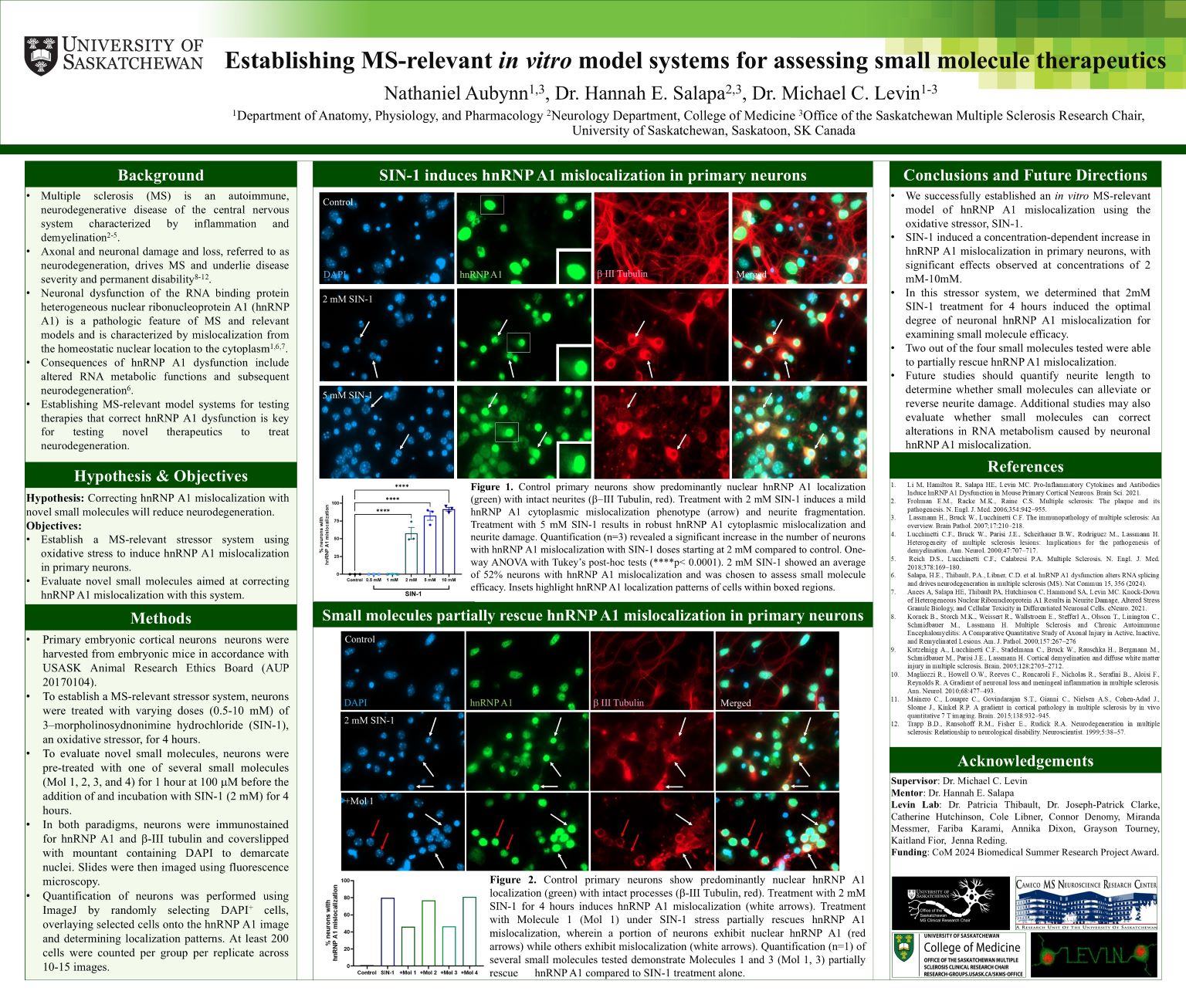
Establishing MS-relevant in vitro model systems for assessing small molecule therapeutics
Nathaniel Aubynn
Multiple Sclerosis (MS) is a neurodegenerative disease marked by significant neuronal cell loss. Neuronal dysfunction of the RNA binding protein heterogeneous nuclear ribonucleoprotein A1 (hnRNP A1) is a pathologic feature of MS, characterized by hnRNP A1’s mislocalization from the homeostatic nuclear location to the cytoplasm in neurons. We hypothesized that oxidative stress, significant in MS pathogenesis, would induce mislocalization of neuronal hnRNP A1, creating an MS-relevant in vitro stress model. This model could then be used to test novel small molecules for their ability to correct hnRNP A1 mislocalization. Primary embryonic cortical neurons were exposed to varying doses (0.5-10mM of 3–morpholinosydnonimine hydrochloride (SIN-1), a reactive oxygen species generator, to induce oxidative stress. The treatment led to hnRNP A1 mislocalization at both 4 and 24 hours, with significant effects observed starting at 2 mM SIN-1. The optimal condition for testing small molecules was determined to be 2 mM SIN-1 for 4 hours. Neurons pre-treated with small molecules were then exposed to the optimal condition. Out of four small molecules tested, two demonstrated partial effectiveness in correcting hnRNP A1 mislocalization. This model provides a valuable tool for studying oxidative stress in MS and evaluating potential therapeutic agents targeting hnRNP A1 mislocalization.
